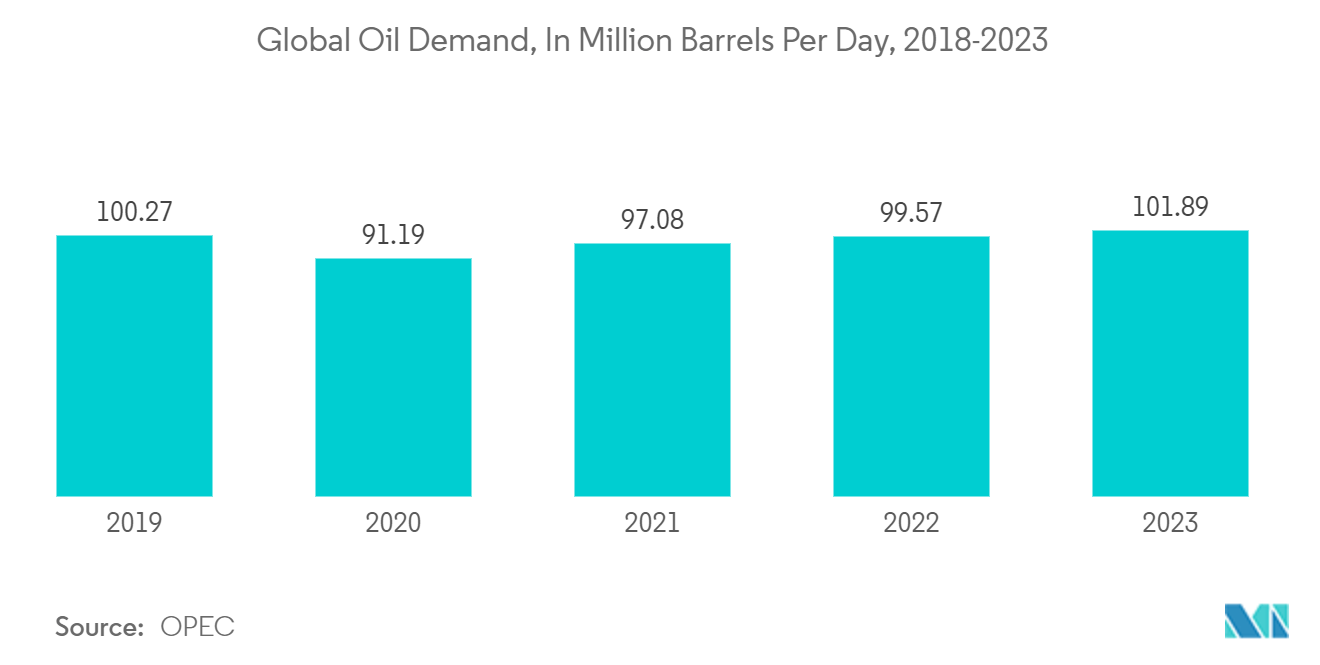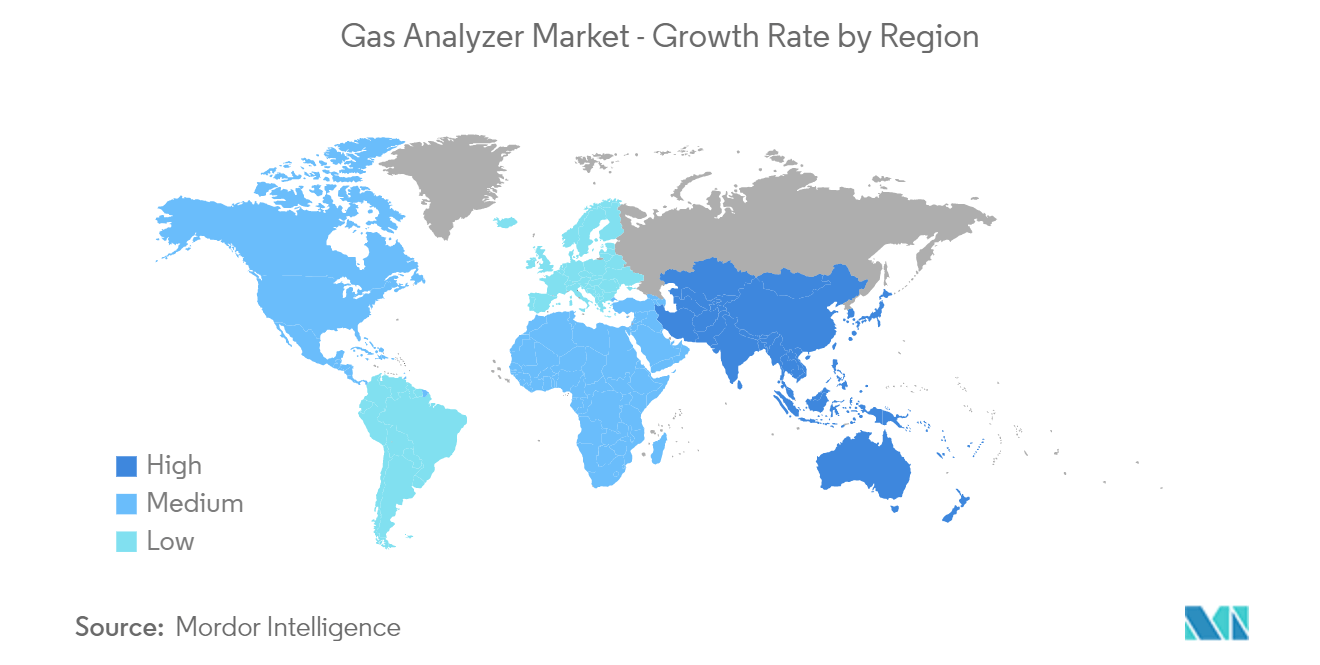Market Trends of Gas Analyzer Industry
Oil and Gas Segment to Hold Significant Share
Protecting a pressurized pipeline from leaks and corrosion while minimizing downtime are some of the key responsibilities in the oil and gas industry. According to NACE (National Association for Corrosion Engineers), corrosion costs about USD 1.6 billion to the global oil and gas industry. Mitigating such expensive costs is among the major propellers for adopting gas analyzers for preventive actions in the industry.
For instance, a gas analyzer helps monitor leaks, extending the life of pipeline systems by effectively detecting the presence of such gases. Additionally, the oil and gas industry is moving toward the TDL technique (Tunable Diode Laser), which enables the reliability of detecting with precision because of its high-resolution TDL technique and avoids interferences common with traditional analyzers.
According to OPEC, global oil demand is expected to reach 101.9mb/d, an increase of about 2 md/d above current levels. As the detection and monitoring of hydrogen sulfide and carbon dioxide are pertinent in natural gas processing, the increasing oil and gas demand and consumption are estimated to drive the adoption of gas analyzers globally.
Furthermore, oxygen in the gas sample determines leakage in the pressurized pipeline system. The continuous and undetected leak may worsen the situation while impacting on operational flow efficiency of the pipeline. Moreover, the presence of gases, such as hydrogen sulfide (H2S) and carbon dioxide (CO2), in the pipeline system reacting with oxygen can combine and form a corrosive and destructive mixture that can deteriorate the pipeline wall inside out.
The alliances formed by the companies, organizations, and countries aim to reduce methane emissions within the oil and gas industry. According to the United Nations, 24% of all manmade methane emissions are caused by leakages in oil and gas production systems. Many countries are joining the global alliance to commit to methane emission reduction targets of at least 45% by 2025 and 60%-75% by 2030 or to a 'near-zero' methane intensity target.

Asia-Pacific to Witness a Significant Growth
Asia-Pacific is the key region to register capacity growth in the oil and gas industry in recent years. According to EIA, various refining projects are scheduled in the region between 2022 and 2023, through which 1,120 thousand barrels per day of refining capacity will be added by China alone.
The demand for low-cost, high-precision products across developing countries, such as India, China, and Japan, is expected to boost the market's growth. Furthermore, the increased enforcement of government regulations from China, Japan, and South Korea has encouraged companies to invest in sophisticated gas analyzers. Thus, companies are willing to invest in safety systems rather than facing disasters.
Government agencies in the region have been taking proactive measures to enforce the use of gas analyzers in potentially hazardous locations. They are a vital cog for triggering emergency procedures across industries in case of an abnormal rise in the concentration of gases actively used to monitor the air quality and detect combustible gases, majorly in the chemical, industrial, medical, and automotive industries.
Mining is one of the challenging industries regarding worker safety. Several hazardous gases are the products of mining and mineral processing that must be continuously monitored. India's mining sector is extremely valuable and growing faster as the industry is heavily regulated, and many industries rely on this industry for essential sources. The propelling demand for portable gas analyzers in the mining industry drives market growth.
Furthermore, gas analyzers are also being used to analyze the pollution levels across a city. In countries like China and India, pollution levels are at an all-time high, leading to gas analyzers being deployed to monitor and control pollution levels. For instance, according to a report by the University of Chicago, 99% of China's population lives in areas where the annual average of particulate pollution exceeds the WHO guideline. As the industrial sector in countries like India, China, and Japan is developing faster, this factor is expected to drive the demand for gas analyzers.


